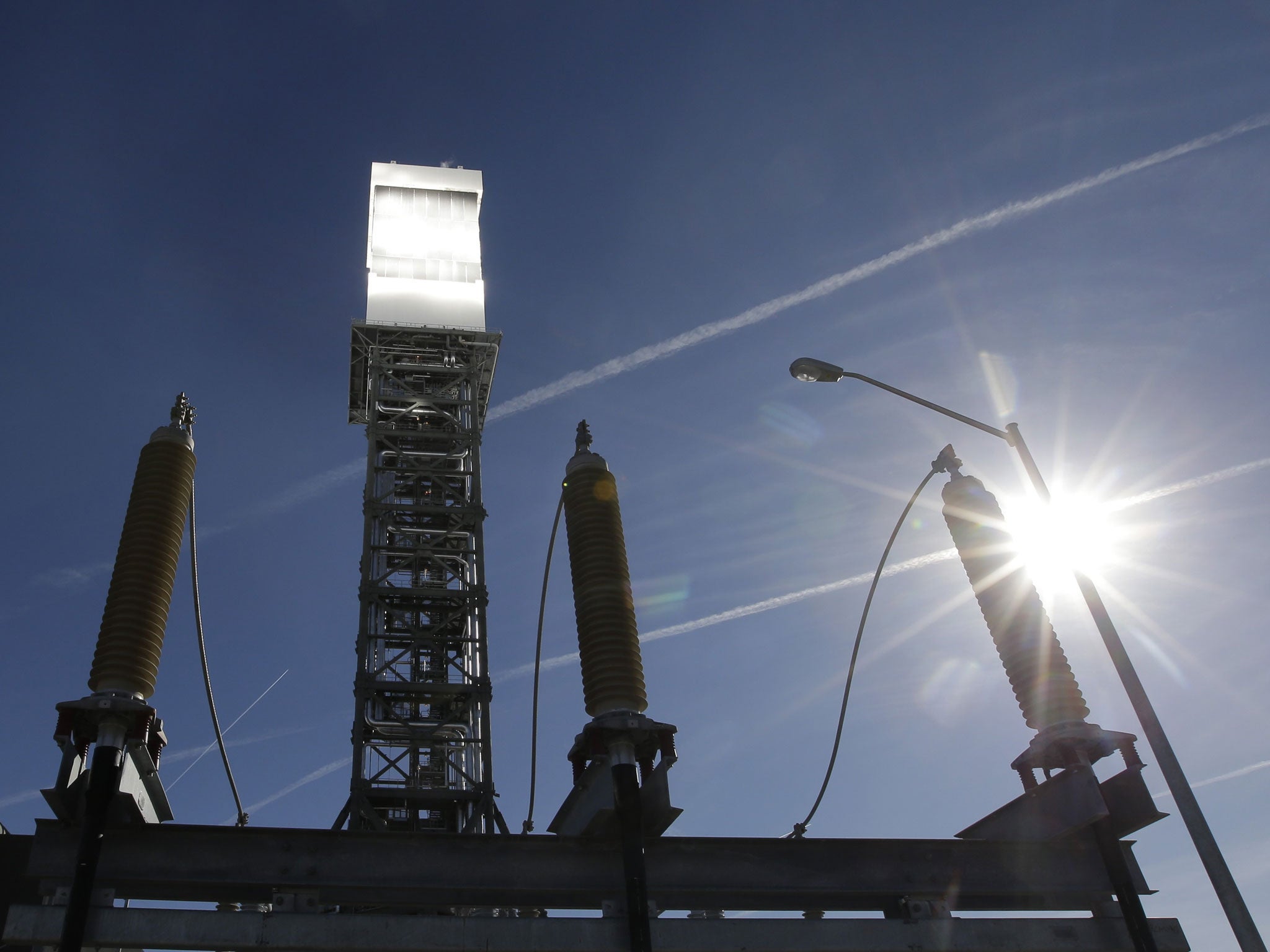California opens world's largest solar power farm - as evidence emerges that it leaves birds who fly over 'scorched'
State officials decide benefit of green energy for 140,000 homes outweighs 'significant impacts on environment'

Environmentalists in California face a difficult dilemma after it emerged that a brand new solar power plant could actually be scorching to death some birds that fly over it.
The Ivanpah Solar Electric Generating System spans 5 square miles (13 square kilometres) of the Mojave Desert near the border with Nevada, and opened on Thursday despite strong objections from wildlife activists.
Although it has the potential to provide green energy to 140,000 homes, the Ivanpah project has also been criticised for disrupting a thriving habitat for tortoises, coyotes, kit foxes and bobcats.
While measures have been taken to protect these animals – including a “tortoise fence” around the perimeter of the plant – evidence has now come to light which suggests a far more worrying hazard produced by the project’s extreme heat.
The system produces power by reflecting line from more than 300,000 giant mirrors onto three water towers. The sunlight hitting the towers can create temperatures of up to 1,000F (530C), producing steam which then drives generator turbines.
Yet this process also creates an extremely hot “thermal flux” around the tower, and biologists producing compliance reports for developer BrightSource Energy said that at least two dead birds found on the site in November last year were likely killed by “scorching”.
They provided images which appeared to show bird carcasses with “singed feathers”, and while the species involved were blackbirds and warblers, experts have reported sightings of red-tailed hawks and golden eagles above the site in the past. Other birds are believed to have died after colliding with mirrors.

The state government of California has pledged to provide one third of all energy through sustainable sources by 2020, meaning it is increasingly likely to accept environmental trade-offs to give projects like Ivanpah the green light.
The California Energy Commission has concluded that while the solar plant would impose “significant impacts on the environment ... the benefits the project would provide override those impacts.”
“We're trying to figure out how big the problem is and what we can do to minimize bird mortalities,” said Eric Davis, assistant regional director for migratory birds at the US Fish and Wildlife Service’s Sacramento office. He told the Wall Street Journal: “When you have new technologies, you don't know what the impacts are going to be.”
An environmentalist group, the Western Watersheds Project, is currently pursuing a lawsuit against the federal agencies that reviewed the Ivanpah project. Its California director, Michael J Connor, said alternatives to the site were not considered and serious environmental impacts, including fragmenting the tortoise population, were ignored.
Despite those concerns, the opening of Ivanpah has been hailed by the Solar Energy Industries Association as “a dawn of a new era in power generation in the United States”.
Join our commenting forum
Join thought-provoking conversations, follow other Independent readers and see their replies
Comments